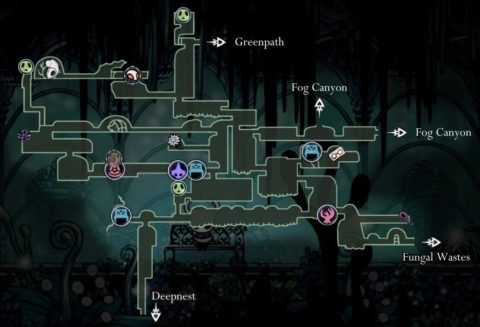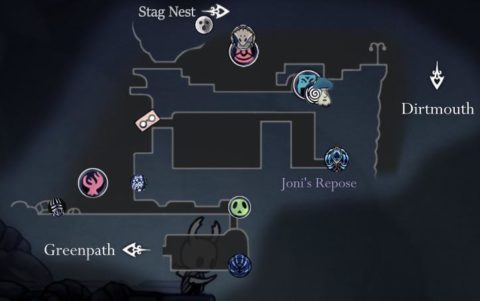
He was that one kid who was really excited about Google+ and is still sad about how that turned out.In Hollow Knight, finding Pale Ore can be a pain if you don’t know where to look. Moises Taveras is an intern for Paste Magazine and the managing editor of his college newspaper, the Brooklyn College Vanguard.

So long as you’re looking for it, there always will be. But its world is a promising one, and it’s made all the better in how the mapping system in Hollow Knight encourages the player to push on the boundaries laid out before you in order to find more. The things it hides are dangerous and threatening, not in a way that actually gets to me but in a simpler way that impedes my progression through it. It’s not that Hallownest isn’t a terrifying place to uncover. Sometimes the greatest discoveries came when I was least expecting them. The goal may be to build it out completely, but you don’t need to in order to make the most of your time in Hallownest. Mechanically, it affirms that I have been there and I have done that, whatever there and that may be. While any journey you make is deeply personal, the fact that the map only reflects the trips you make and chart builds a history of your own ventures into your map. This nearly-scientific approach to exploration made me want to scour every last corner I could. It doesn’t feel like any particular coincidence that you bring a journal and document all the foes you encounter beneath the surface. You’re not just floating through this intricate network of caves, you’re unearthing secrets of a culture and people lost to time. It also allows exploration to take on an entirely different feeling, like something resembling an archaeological dig. It makes discovery and exploration feel rewarding and actually mysterious.

If you want to fill in its gaps, you need to take your parchment and quill and brave the mysteries of the caverns above and below. In Hollow Knight, this dynamic is largely flipped on its head: while you can always seek out Cornifer and find a map, you’re by and large swinging in the dark, chancing upon routes, secrets and whatever else it conceals. In this take on exploration, you see things and then likely carve a path there. You can climb a tower or tower-like structure, survey the area, and whether or not it gives you a faint or explicit description of the land, you can see everything laid out before you. In a game like Breath of the Wild or even a modern Ubisoft game, exploration has taken on a different meaning than what I’m suggesting Hollow Knight does. The most important step is the last one: you need to explore. That requires you buying a quill so that you can bolden those lines and boundaries while building on the foundation he provides. He draws landmarks and teases what may be there, but leaves it up to you to fill it in. First you need to find Cornifer, the map maker and buy his map, which is at best a faint impression of what’s all there in any given area. Because of this, mapping in Hollow Knight is a much more involved process. It’s a style of exploration that harkens back to the days before games even had built-in map systems.

While your typical modern Metroid-style game fills in the map as you run through its chambers, you need to purposefully map out the area yourself in Hollow Knight. It’s a longform escape sequence aided by a great mechanical twist: you don’t have a map of the area. Considering that you do literally fall into this area, your appearance there is an unfortunate accident and it’s one you spend the rest of your time there trying to remedy. It’s violence and terror, personified and realized better than most horror I’ve experienced. You hear the constant chitter of the very enemies that might devour you while their silhouettes writhe in the foreground and you navigate its suffocating passageways. It’s one of the deepest and darkest corners of the kingdom of Hallownest, but exploring it is still exhilarating.

Nothing quite beats how insufferably oppressive Deepnest is.


 0 kommentar(er)
0 kommentar(er)
